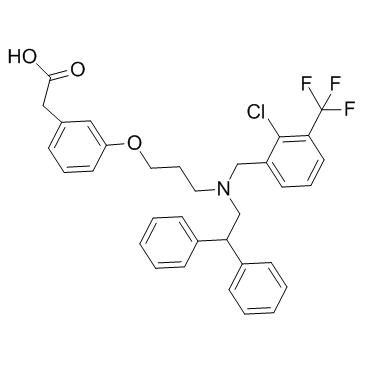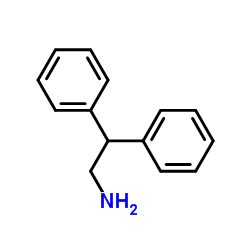| Description |
GW3965 is a potent, selective LXR agonist for hLXRα and hLXRβ with EC50 of 190 and 30 nM, respectively.
|
| Related Catalog |
|
| Target |
EC50: 190 nM (hLXRα), 30 nM (hLXRβ)
|
| In Vitro |
GW3965 promotes GBM cell death in vitro with enhanced efficacy in EGFRvIII-expressing tumor cells. GW3965 up-regulates expression of the cholesterol transporter gene ABCA1 and the E3 ubiquitin ligase IDOL and reduces LDLR levels[2]. LXR ligands inhibits platelet aggregation and calcium mobilization stimulated by collagen or CRP. GW3965 (1 or 5 μM) displays a minor inhibitory effect on fibrinogen binding and P-selectin exposure, when platelets are stimulated with 1 μg/mL CRP. But using higher concentrations of GW3965 (10 μM) or T0901317 (40 μM), the levels of fibrinogen and P-selectin on the platelet surface are reduced[3].
|
| In Vivo |
GW3965 induces an increase of neuroactive steroids in the spinal cord, the cerebellum and the cerebral cortex of STZ-rats, but not in the CNS of non-pathological animals. GW3965 treatment induces an increase of dihydroprogesterone in the spinal cord of diabetic animals in association with an increase of myelin basic protein expression[1]. GW3965 (40 mg/kg, p.o.) strongly induces ABCA1 expression and reduces LDLR expression, and this is accompanied by 59% inhibition of tumor growth, and a 25-fold increase in GBM cell apoptosis in vivo[2]. GW3965 (2 mg/kg, i.v.) increases bleeding time and modulated platelet thrombus formation in vivo[3].
|
| Cell Assay |
Cells are seeded in 96 wells and are treated after 24 hours with different drugs indicated in each experiment in medium containing 1% FBS or lipoprotein deficient serum. Relative proliferation is determined using Cell Proliferation Assay Kit. Cells are incubated 1.5 hrs after adding tetrazolium salt WST-1 [2-(4-iodophenyl)-3- (4-nitrophenyl)-5-(2, 4-disulfo-phenyl)-2H-tetrazolium, monosodium salt] at 5% CO2, 37ºC and the absorbance of the treated and untreated cells are measured using a microplate reader at 420 to 480 nm. Cells seeded in 12 well plates are counted using a hemocytometer, and dead cells are assessed using trypan blue exclusion assays.
|
| Animal Admin |
Diabetes is induced in two-month-old male rats by a single i.p. injection of freshly prepared STZ (65 mg/kg) in 0.09 M citrate buffer, pH 4.8. Control animals are injected with 0.09 mol/L citrate buffer at pH 4.8. Hyperglycemia is confirmed 48 h after streptozotocin injection by measuring tail vein blood glucose levels using a glucometer OneTouch Ultra2. Only animals with mean plasma glucose levels over 300 mg/mL are classified as diabetic. Glycemia is also assessed before treatment with Ro5-4864 or GW3965 and before death. Two months after STZ injection, diabetic animals are treated once a week with Ro5-4864 (3 mg/kg) or GW3965 (50 mg/kg). Thus, they receive four subcutaneous injections in a month. Control diabetic rats receive 200 μL of vehicle (sesame oil). Four-month-old non-diabetic male rats are injected, following the same experimental schedule, with Ro5-4864, GW3965 or vehicle. Rats are killed 24 h after the last treatment.
|
| References |
[1]. Mitro, Nico., et al. LXR and TSPO as new therapeutic targets to increase the levels of neuroactive steroids in the central nervous system of diabetic animals. Neurochemistry International (2012), 60(6), 616-621. [2]. Guo, Deliang., et al. An LXR Agonist Promotes Glioblastoma Cell Death through Inhibition of an EGFR/AKT/SREBP-1/LDLR-Dependent Pathway. Cancer Discovery (2011), 1(5), 442-456. [3]. Spyridon, Michael., et al. LXR as a novel antithrombotic target. Blood (2011), 117(21), 5751-5761.
|

![(3-{[tert-butyl(dimethyl)silyl]oxy}phenyl)acetic acid structure](https://image.chemsrc.com/caspic/074/114774-44-6.png)


